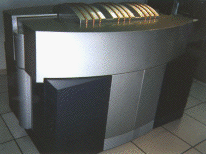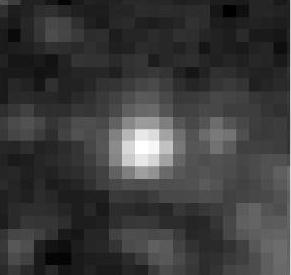Astronomy Picture of the Day
Discover the cosmos! Each day a different image or photograph of our fascinating universe is featured, along with a brief explanation written by a professional astronomer.
Posted on 09/27/2002 5:47:51 AM PDT by petuniasevan
Discover the cosmos! Each day a different image or photograph of our fascinating universe is featured, along with a brief explanation written by a professional astronomer.
Explanation: Don't be fooled by the familiar symmetry. The graceful spiral structure seen in this computer visualization does not portray winding spiral arms in a distant galaxy of stars. Instead, the graphic shows spiral shock waves in a three dimensional simulation of an accretion disk -- material swirling onto a compact central object that could represent a white dwarf star, neutron star, or black hole. Such accretion disks power bright x-ray sources within our own galaxy. They form in binary star systems which consist of a donor star (not shown above), supplying the accreting material, and a compact object whose strong gravity ultimately draws the material towards its surface. For known x-ray binary systems the size of the accretion disk itself might fall somewhere between the diameter of the Sun (about 1,400,000 kilometers) and the diameter of the Moon's orbit (800,000 kilometers). One interesting result of the virtual reality astrophysics illustrated here is that the simulated disk develops instabilities which tend to smear out the pronounced spiral shocks.


PETA shows up everywhere... ;-D
Here's a chart of how supercomputing has grown:
| Performance Tier | FLOPS equivalent | Key Platforms |
| kiloflops (KFLOPS) | 1,000 FLOPS | IBM 701 (1953) IBM 704 (1955) Apple II (1977) |
| megaflops (MFLOPS) | 1,000,000 FLOPS | CDC 6600 (1966) Cray 1 (1976) Intel Pentium (1993) |
| gigaflops (GFLOPS) | 1,000,000,000 FLOPS | Cray 2 (1985) Thinking Machines CM-2 (1987) Microsoft Xbox (2001) |
| teraflops (TFLOPS) | 1,000,000,000,000 FLOPS | Intel ASCI Red (1996) IBM ASCI Blue Pacific (1998) IBM ASCI White (2000) NEC Earth Simulator (2002) |
| petaflops (PFLOPS) | 1,000,000,000,000,000 FLOPS | IBM Blue Gene (2005-2010?) |

 There has been a technological revolution over the last decade in observing the heavens...
There has been a technological revolution over the last decade in observing the heavens...
|
|
|
 |
 |
What about Global Warming? It's the same bujt even more complex. On top of that they are attempting to model a real system, not just a general abstract planet similar to earth. Their model is doomed to be nothing more than an approximation forever. The second order components in fluid dynamics have been known from basic newtonian physics for hundreds of years. These components are what they plug into their climate model. Then complicate matters by having different limits in different regions of the space. Then use up precious CPU time by having smaller and smaller regions, millions of regions, each different in some way. Right there you have diverged from reality because you don't have all the measurements for each cell and have to make assumptions.
Computational complexity might be a hindrance for an accretion disk model, but for a climate model upon which to base public decisions, the situation is beyond hope.
Disclaimer: Opinions posted on Free Republic are those of the individual posters and do not necessarily represent the opinion of Free Republic or its management. All materials posted herein are protected by copyright law and the exemption for fair use of copyrighted works.